Today Current Affairs: 24th November 2021 for UPSC IAS exams, State PSC exams, SSC CGL, State SSC, RRB, Railways, Banking Exam & IBPS, etc
Table of Contents
Central Consumer Protection Authority (CCPA):
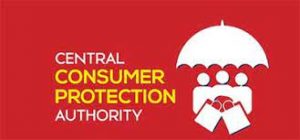
The Central Consumer Protection Authority (CCPA) has initiated a country-wide campaign to prevent sale of spurious and counterfeit goods that violate Quality Control Orders published by the Central Government.
- In this regard, CCPA has already issued directions to district collectors across the country to investigate unfair trade practices and violation of consumer rights concerning manufacture or sale of such goods.
- Essential, daily use products which have been identified for the campaign are Helmets, Pressure Cooker and Cooking Gas Cylinders.
- In furtherance to the campaign, CCPA has taken suo-moto cognizance against e-commerce entities found to be selling Pressure Cookers in violation to the Domestic Pressure Cooker (Quality Control) Order, 2020 issued by the Central Government under Section 16 (1) of the BIS Act, 2016 on 21st January 2020.
- By the said Order, Domestic Pressure Cooker are mandated to conform to Indian Standard IS 2347: 2017 and bear the standard mark under a license from BIS with effect from 1st August 2020.
- Rule 4(2) of the Consumer Protection (E-commerce) Rules, 2020 specifies that no e-commerce entity shall adopt any unfair trade practice, whether the in course of business on its platform or otherwise.
- The Consumer Protection Act, 2019 has come into force from 20th July, 2020.
- As provided in section 10 of the Act, the Central Consumer Protection Authority (CCPA) has been established w.e.f. 24th July, 2020.
- The objective of the Central Consumer Protection Authority (CCPA) is to promote, protect and enforce the rights of consumers as a class.
The Global State Of Democracy Report, 2021:

The Global State of Democracy Report, 2021 was recently released by the International Institute for Democracy and Electoral Assistance.
- The reports refer to three main regime types: democracies, hybrid and authoritarian regimes. Hybrid and authoritarian regimes are both classified as non-democratic.
Highlights of the Report:
- The number of countries moving towards authoritarianism in 2020 was higher than that of countries going in the other direction, towards democracy.
- 20 countries moved in the direction of authoritarianism, seven countries moved towards democracy.
- The pandemic has prolonged this existing negative trend into a five-year stretch, the longest such period since the start of the third wave of democratisation in the 1970s.
- Democratically elected Governments, including established democracies, are increasingly adopting authoritarian tactics.
- The report highlighted the case of Brazil and India as “some of the most worrying examples of backsliding”.
- However, India remained in the category of a mid-level performing democracy as it has since 2000.
- The United States and three members of the European Union [Hungary, Poland and Slovenia] have also seen concerning democratic declines.
- The Global State of Democracy 2021 reviews the state of democracy around the world over the course of 2020 and 2021, with democratic trends since 2015 used as contextual reference.
- It is based on analysis of events that have impacted democratic governance globally since the start of the pandemic, based on various data sources, including International IDEA’s Global Monitor of Covid-19’s Impact on Democracy and Human Rights, and International IDEA’s Global State of Democracy (GSoD) Indices.
- The GSoD Indices provide quantitative data on democratic quality for the same countries, based on 28 aspects of democracy up until the end of 2020.
ASEAN Meet:

China has announced USD 1.5 billion development assistance for the ASEAN besides the elevation of the ties to a comprehensive strategic partnership to strengthen security cooperation with the 10-nation bloc, amid the US push into the resource rich Indo-Pacific.
- Xi made the remarks at the Association of Southeast Asian Nations (ASEAN)-China Special Summit to commemorate the 30th Anniversary of ASEAN-China Dialogue Relations.
- He also said China would never seek hegemony nor take advantage of its size to coerce smaller countries, and would work with Asean to eliminate “interference”.
- The Association of Southeast Asian Nations is a regional organization which was established to promote political and social stability amid rising tensions among the Asia-Pacific’s post-colonial states.
- The motto of ASEAN is “One Vision, One Identity, One Community”.
- ASEAN Secretariat – Indonesia, Jakarta.
- Established in 1967 with the signing of the ASEAN Declaration (Bangkok Declaration) by its founding fathers.
- Founding Fathers of ASEAN are: Indonesia, Malaysia, Philippines, Singapore and Thailand.
- Ten Members: Brunei, Cambodia, Indonesia, Laos, Malaysia, Myanmar, the Philippines, Singapore, Thailand, and Vietnam.
Tsirkon Hypersonic Missile: Russia:
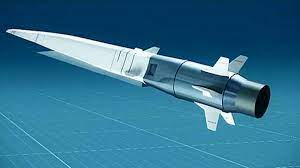
Russia has fired its Tsirkon (Zircon) Hypersonic Cruise Missile from a warship in the north of the country.
- Earlier, it was reported that China tested a nuclear-capable hypersonic glide vehicle that circled the globe before speeding towards its target.
- The Tsirkon Cruise Missile will join Avangard glide vehicles and the air-launched Kinzhal (Dagger) missiles in Russia’s hypersonic arsenal.
- Cruise missiles differ from ballistic missiles in that they fly towards their target at lower altitudes, remaining within the Earth’s atmosphere throughout their trajectory.
- It is one of the several missiles being developed in Russia that will arm up Russian submarines, frigates, and cruisers.
- Hypersonic Weapons are much harder to track and intercept than traditional projectiles because they can travel more than five times the speed of sound and maneuver in mid-flight.
Hypersonic Technology:
- Speed: 5 or more times the Mach or speed of sound.
- Mach Number: It describes an aircraft’s speed compared with the speed of sound in air, with Mach 1 equating to the speed of sound i.e. 343 metre per second.
- Technology Used: Most hypersonic vehicles primarily use the scramjet technology, which is a type of Air Breathing propulsion System.
- This is extremely complex technology, which also needs to be able to handle high temperatures, making the hypersonic systems extremely costly.
- Types:
- Hypersonic cruise missiles: These are the ones that use rocket or jet propellant through their flight and are regarded as being just faster versions of existing cruise missiles.
- Hypersonic Glide Vehicle (HGV): These missiles first go up into the atmosphere on a conventional rocket before being launched towards their target.
Manifesto To Accelerate The Use Of Space In Europe:
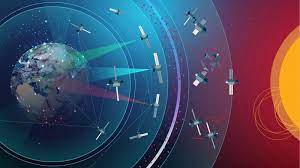
The European Space Agency (ESA) council has approved a manifesto to accelerate the use of space in Europe.
- Basically, the council has adopted a resolution that lays down a vision for the continent in terms of maintaining and expanding its activities in space.
- Other than this, the council recognised two “inspirators” to reinforce European leadership in science, technology development and inspiration: an icy moon sample return mission and human space exploration.
- The resolution defines three “accelerators” to further advance Europe’s space ambitions.
Space for a Green Future:
- Space projects that enable it to understand the current state of the planet and help it get to net-zero greenhouse gas emissions by 2050.
- Earth observation satellites and their data are a key part of this.
- Space applications that allow nations to manage more effectively any crises that crop up.
- Examples: Severe flooding and wildfires were seen in parts of Europe earlier this year (2021). Also, the latest report of the Intergovernmental Panel on Climate Change (IPCC) has flagged frequent weather events, such as heatwaves, extreme rainfalls and rising sea levels. Some of these factors may influence the way wildfires play out.
- Russia’s use of a missile to destroy a satellite in orbit recently has highlighted the need for new systems to safeguard European astronauts and satellites from interference.
Pradhan Mantri Awaas Yojana – Gramin:

Pradhan Mantri Awaas Yojana – Gramin (PMAY-G) has completed 5 years on 20th November, 2021.
- Earlier, it was reported that due to adverse impact of Covid-19, only 5.4% of the sanctioned houses under the PMAY-G, have reached completion for the year 2020-2021.
- The Ministry of Housing and Urban Affairs implements the Pradhan Mantri Awas Yojana – Urban.
- Launch: To achieve the objective of “Housing for All” by 2022, the erstwhile rural housing scheme Indira Awaas Yojana (IAY) was restructured to PMAY-G w.e.f 1st April, 2016.
- Ministry Involved: Ministry of Rural development.
- Aim: To provide a pucca house with basic amenities to all rural families, who are homeless or living in kutcha or dilapidated houses by the end of March 2022.
- To help rural people Below the Poverty Line (BPL) in construction of dwelling units and upgradation of existing unserviceable kutcha houses by providing assistance in the form of a full grant.
- Beneficiaries: People belonging to SCs/STs, freed bonded labourers and non-SC/ST categories, widows or next-of-kin of defence personnel killed in action, ex servicemen and retired members of the paramilitary forces, disabled persons and minorities.
- Selection of Beneficiaries: Through a three stage validation – Socio Economic Caste Census 2011, Gram Sabha, and geo-tagging.
- Cost Sharing: The cost of unit assistance is shared between Central and State Governments in the ratio 60:40 in plain areas and 90:10 for North Eastern and hilly states.
All India Survey On Domestic Workers:
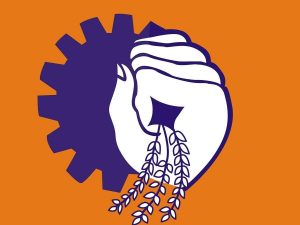
The Union Minister for Labour and Employment flagged off the first ever All India Survey on Domestic Workers (DW).
- This was a first-ever such survey in independent India and will be completed in a year.
The main objectives of the survey are:
- Estimate the number/proportion of DWs at National and State level.
- Household Estimates of Live-in/Live-out DWs.
- Average number of DWs engaged by different types of households.
- Parameters the survey aims to capture the number and proportion of household workers by major states, with separate rural and urban break-ups, their percentage distribution, households that employ them and socio-demographic characteristics.
- The survey would cover 37 States and Union Territories, covering 1.5 lakh households in 742 districts.
- The survey for domestic workers is among five national jobs surveys that will be conducted periodically and provide crucial data for an upcoming national employment policy.
- The other four surveys are the All-India Survey of Migrant Workers, All-India Survey of Employment Generated by Professionals and All-India Survey of Employment Generated in the Transport Sector, All-India Quarterly Establishment-based Employment Survey (AQEES).
6th Edition Of Swachh Survekshan (SS) 2021:

The President awarded the respective cities in the 6th Edition of Swachh Survekshan (SS) 2021 for their performance in maintaining cleanliness, hygiene and sanitation.
- The ceremony was held at the ‘Swachh Amrit Mahotsav’, which is a celebration of the achievements of cities in the past seven years of Swachh Bharat Mission-Urban and a commitment from cities and citizens to move forward with renewed vigour in the next phase of Swachhata through Swachh Bharat Mission-Urban 2.0.
- Earlier, the Jal Shakti Ministry launched Swachh Survekshan Grameen 2021 or rural cleanliness survey 2021 under Swachh Bharat Mission (Grameen) Phase-II.
Swachh Survekshan:
- It is an annual survey of cleanliness, hygiene and sanitation in cities and towns across India.
- It was launched as part of the Swachh Bharat Abhiyan, which aimed to make India clean and free of open defecation.
- The first survey was undertaken in 2016 and covered 73 cities.
- By 2020 the survey had grown to cover 4242 cities and was said to be the largest cleanliness survey in the world.
- In 2021 Survekshan, participated by 4,320 cities, also saw an unprecedented number of citizens’ feedback – over 5 crores, compared to 1.87 cores last year.
- Nodal Ministry: Ministry of Housing and Urban Affairs (MoHUA).
SS 2021 Categories:
Less than 1 lakh Population:
- Vita, Lonavala, and Saswad cities from Maharashtra have ranked first, second, and third Cleanest Cities respectively.
More than 1 Lakh Population: - For the 5th consecutive year, Indore (Madhya Pradesh) was awarded the title of India’s Cleanest City under Swachh Survekshan, while Surat and Vijayawada bagged the second and third spots respectively.
- Hoshangabad in Madhya Pradesh emerged as the ‘Fastest Mover City’ thus securing a place among the top 100 cities at 87th position.
- Best Ganga Town: Varanasi.
- Cleanest Cantonment: Ahmedabad Cantonment, followed by Meerut Cantonment and Delhi Cantonment.
Cleanest State:
More than 100 Urban Local Bodies:
- Chhattisgarh has been awarded as the ‘Cleanest State’ of India for the 3rd consecutive year.
- Karnataka emerged as the ‘Fastest Mover State’.
Less than 100 Urban Local Bodies:
- Jharkhand won the ‘Cleanest State’ of India for the second time in this category.
- Mizoram emerged as the ‘Fastest Mover State’.
Prerak Daaur Samman:
- This is a new performance category introduced under SS 2021, five cities – Indore, Surat, Navi Mumbai, New Delhi Municipal Council and Tirupati were categorized as ‘Divya’ (Platinum).
Personal Data Protection (PDP) Bill, 2019:

A Joint Parliamentary Committee (JPC) has finalised and adopted the draft report on The Personal Data Protection (PDP) Bill, 2019 by a majority.
- The Bill will be soon tabled in the upcoming Winter Session of Parliament. The JPC has got five extensions to submit a report on the Bill in two years.
- PDP Bill:
It was first brought to the Parliament in 2019 and was referred to the JPC for examination at the time. - The Bill was drafted after a Supreme Court ruling that declared ‘Right to Privacy’ a fundamental right in August 2017, Puttaswamy judgment.
- It is commonly referred to as the “Privacy Bill” and intends to protect individual rights by regulating the collection, movement, and processing of data that is personal, or which can identify the individual.
- The Bill is landmark legislation meant to regulate how various companies and organizations use individuals’ data inside India.
- The 2019 draft of the Bill proposed the formation of a Data Protection Authority (DPA), which would regulate the use of users’ personal data by social media companies and other organizations within the country.
Report:
Clause 35/Exemption Clause:
- The committee has retained the Clause with minor change.
- It allows the Government to keep any of its agencies outside the purview of the law.
- The Clause in the name of “public order”, ‘sovereignty’, “friendly relations with foreign states” and “security of the state” allows any agency under the Union Government exemption from all or any provisions of the law.
- The clause is for “certain legitimate purposes” and also there is precedent in the form of the reasonable restrictions imposed upon the liberty of an individual, as guaranteed under Article 19 of the Constitution and the Puttaswamy judgment.
Draft Scheme Of Amalgamation Of PMC & USF Bank: RBI:
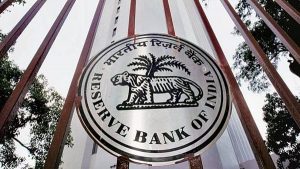
The Reserve Bank of India (RBI) released a draft scheme of amalgamation of Punjab and Maharashtra Cooperative (PMC) Bank and Unity Small Finance Bank (USF).
- Earlier, PMC was put under restrictions on account of fraud that led to a steep deterioration in the networth of the bank.
- According to the draft scheme of amalgamation, following the amalgamation, depositors of PMC Bank will get their money back over a period of 3-10 years.
- The interest on any interest-bearing deposit with the transferor (PMC) bank will not accrue after 31st March 2021.
- The takeover of assets and liabilities of PMC Bank, including deposits, by Unity, will give a greater degree of protection for the depositors.
- USF Bank is being set up with capital of about Rs 1,100 crore as against a regulatory requirement of Rs 200 crore for setting up a small finance bank under the guidelines for on-tap licensing of small finance banks in the private sector.




